The precision and safety of applying plant protection products (PPPs) hinges on the performance of sprayers and other pesticide application equipment (PAE).
These tools of the trade are not only pivotal in the accurate and effective control of pests and diseases but also safeguard operators during filling and mixing. It is paramount that sprayers are maintained in optimal conditions.
The Sustainable Use Directive (SUD) 2009/128/EC regulates the use of PPPs and requires that sprayers in professional use are inspected.
Under Irish law, PAE tests are required at least once every three years. This includes both horizontal boom sprayers and bush/orchard blast sprayers.
The countdown for testing begins from the date of purchase for the initial test and recurs at three-year intervals thereafter.
Horizontal boom sprayers including those less than 3m, which may be fitted to ATVs for example, and spraying systems integrated into sowing equipment (like maize planters) which are in use and over three years old, require an initial test before 31 December 2024. This requirement stands irrespective of usage frequency.
All relevant information and a full list of DAFM registered EIs is available by scanning this QR code

Equipment inspectors carry out the test
Sprayer tests must be carried out by independent equipment inspectors (EIs) who have been appropriately trained and are registered with the Department of Agriculture, Food and the Marine (DAFM).
Equipment inspectors are themselves inspected by DAFM officers to ensure sprayer examinations adhere to the highest standards.
Understanding sprayer test costs
The overall cost of getting your sprayer tested can vary based on several factors including:
Boom size: larger sprayers may incur higher testing charges.Number of nozzles: more nozzles mean more points of inspection.Test location: On-site testing at the farmer’s yard may differ in cost from tests conducted at the EI’s premises. Should there be need for repairs or modifications, these will contribute to the overall cost.
What happens if my sprayer is not tested?
Failing to test your sprayer is not only a breach of legal obligations but also affects the conditionality requirements under the Common Agricultural Policy (CAP).
In 2024 under SMR 8 conditionality – Sustainable use of pesticides, DAFM inspectors will verify compliance with testing regulations. Penalties may apply where testing has not been conducted by a registered EI every three years.
Sprayers tested to date
Since the initiation of sprayer testing under SUD in 2014, Ireland has seen a total of 10,242 sprayers tested with over 1,000 tests conducted annually since 2020.
Notably 655 sprayers were tested during 2021 and are due a re-test during 2024 (see table 2). Any sprayer purchased new during 2021 is due its first test this year.
The PAE Testing process:
Sprayers are examined in accordance with ISO 16122-2. EIs are required to carry out a specified series of tests and checks on the equipment, record the results on a test report and establish compliance or not with the requirements of the test. Where aspects of the test are not complied with, the EI may be able to make modifications or repairs to ensure compliance. A copy of the test report must be given to the sprayer operator / owner. A unique numbered and dated DAFM-issued sticker must be attached to the sprayer to identify the sprayer as compliant.
Pre-Inspection Requirements
The sprayer can only be tested once it has passed the pre-inspection checks which include:The sprayer must be clean both inside and on external surfaces including internal parts such as filters.The PTO drive shaft guard should be fitted and in good condition.Any guards which provide protection of the operator should be present and working properly.Any hydraulic pipes or hoses should have no visible leakages, should be free from defects or excessive wear, cuts, or cracks. The frame and structural parts of the sprayer should be in good condition. Locking or folding parts should be working correctly.The owner/operator must ensure the sprayer will pass the pre-inspection checks and ideally should be present for the duration of the sprayer test.Sprayer testing checks
Here are some of the key items which will be assessed during the sprayer test. There are some variations between the test requirements for a sprayer depending on boom width being less than or greater than 3m. Here we will look at sprayer testing with a boom of greater than 3m width.
Pressure gauge
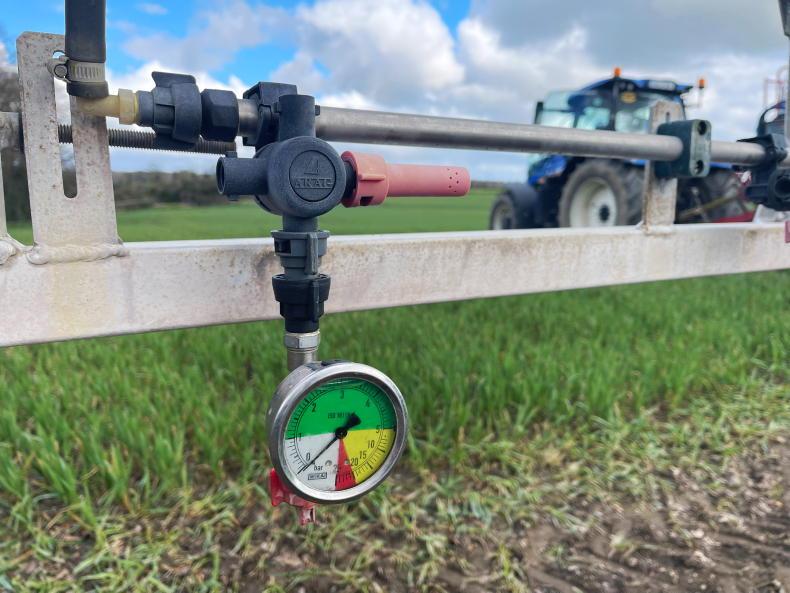
The pressure and flow rate is checked in the sprayer test.
An accurate pressure gauge is essential to apply plant protection products accurately.
The gauge must meet pressure requirements when tested against a calibrated master gauge. The gauge must be the correct size (at least 63mm in diameter), readable when viewed from the operating position, and have the correct scale markings.
Gauges which fail the test must be replaced with a new one before continuing with the sprayer test. The EI also needs to ensure the new one is accurate.
Nozzles
All nozzles must be identical, and their orientation and location shall be uniform along the sprayer boom. Section pressures and flow rates are also measured as part of the test. Where a sprayer boom has more than one set of nozzles a test is required for each set.
The nozzles are a very important part of the sprayer. The flow rate of each nozzle must be checked to ensure that the flow rate does not deviate more than +/- 10% from the flow rate tables provided by the nozzle manufacturer.
As nozzles wear, their flow rate increases, and the evenness of the spray pattern deteriorates. The test will determine the level of wear and whether or not the nozzles need changing. Before the test all nozzles should be the same type along the boom with no leaks, blockages or streaks in the pattern.
Filter
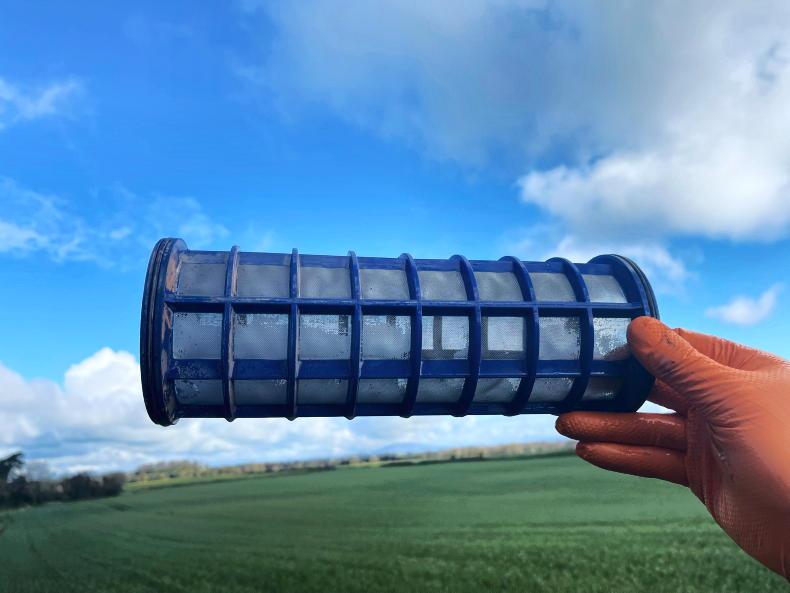
Filters should be clean ahead of the test.
There must be a filter on the pressure side of the pump and most sprayers need to have a suction filter as well. Nozzle filters are not considered as a substitute for pressure side filters. Filters must be clean and undamaged. Filter inserts must be changeable and the mesh size appropriate for the nozzles fitted to the sprayer. It must also be possible to clean the filters without spillage of any tank contents if it gets clogged while spraying. There must be no leaks from filtering units.
Boom
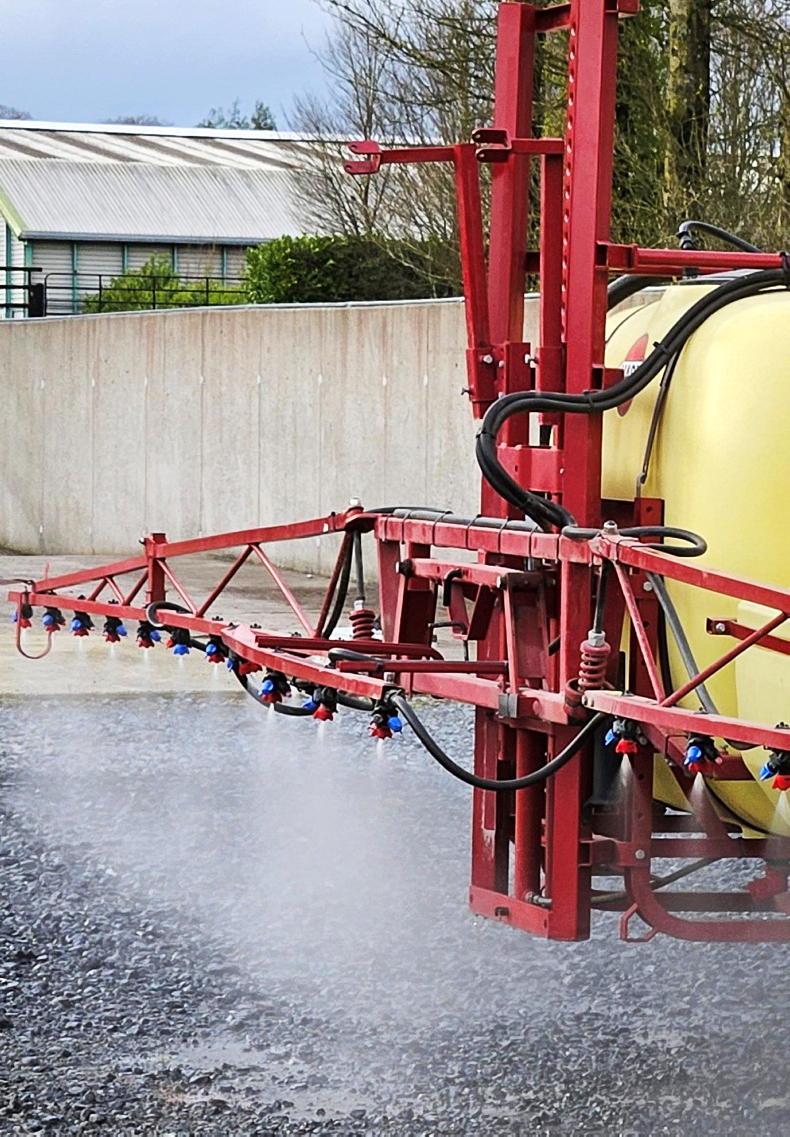
The sprayer boom should be stable.
The boom must be in good condition and stable in all directions. The boom should be straight and level and the unfolding mechanisms and break-back devices must function correctly.
Controls
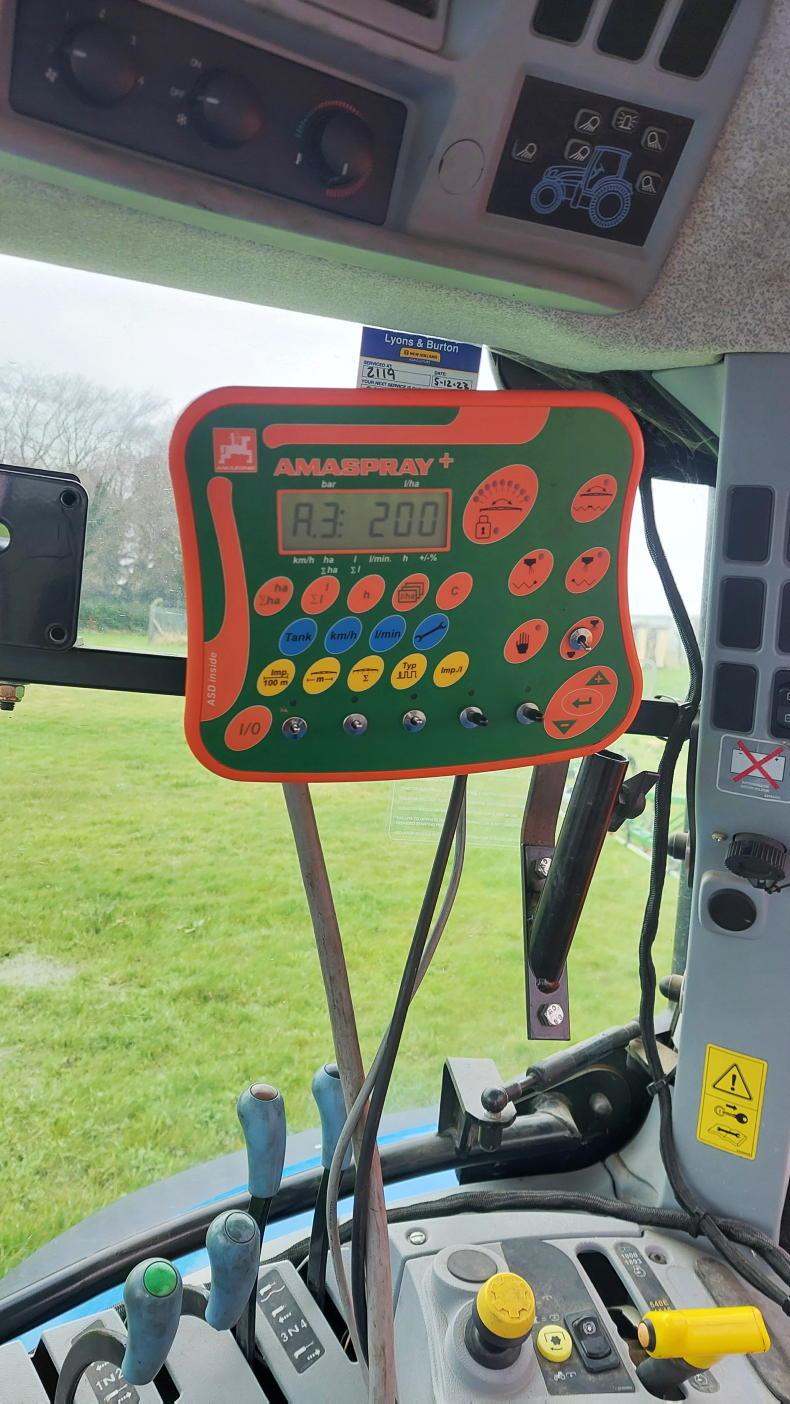
Sprayer controls should be accessible from the tractor cab.
The controls of the sprayer must be accessible from the tractor cab. All devices for regulating the flow and adjusting the pressure must be present and working properly. The on/off handle and boom section taps must be present and working properly. There must be no leaks from the controls or manifold they are mounted to.
Pump Capacity
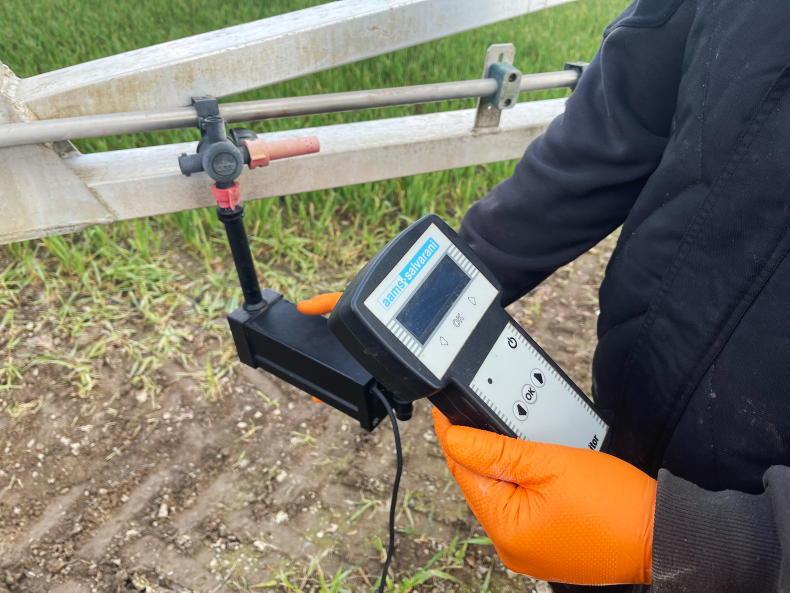
The pump capacity will be assessed to ensure that the pump is performing correctly.
The sprayer pump must be in good working order and capable of providing sufficient flow for the size of sprayer and ensure good agitation.
The pump capacity will be assessed to ensure that the pump is performing correctly, excessive pressure fluctuations will result in uneven spray delivery. This is also assessed as part of the test.
Pipes and Hoses
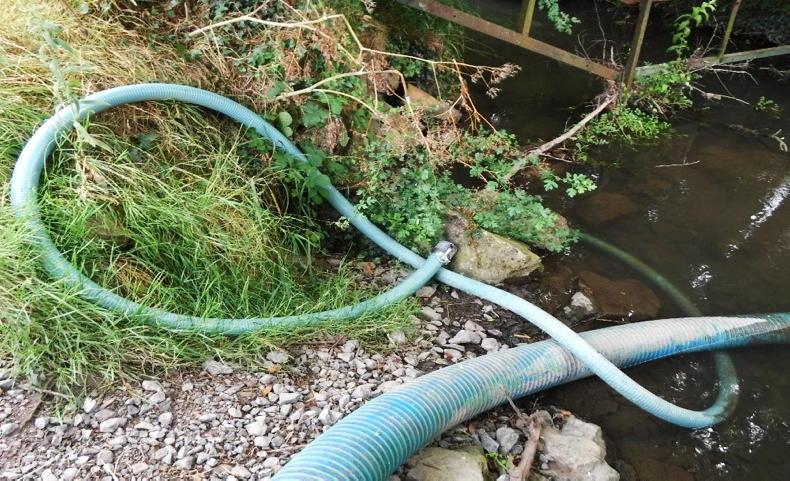
Sprayers cannot be filled from watercourses.
All pipes and hoses must be clean and in good condition to avoid restricting the flow of spray liquid or accidental spillage in case of failure. There must be no leakages from pipes or hoses, when run at higher pressure than the normal spraying pressure.
Leaks
A sprayer with leaks will not pass the test. Leaks usually show up quickly when the pressure is increased to a higher pressure than normal spraying pressure. Leaks are usually easy to fix by adjusting, cleaning or tightening couplings and fittings, replacing ‘o’ rings or sprayer components.
Benefits of testing sprayers
1 A tested sprayer is capable of applying plant protection products evenly to the target area at the right rate.
2 Tested sprayers in good condition reduce the risk of under-dosing or overdosing occurring, resulting in a reduced risk of damage to the environment.
3 The risk to the health and safety of the user and others is reduced with a sprayer that has passed the test.
4 The possibility of pesticides getting into water courses or waterbodies, from spills or inaccurate spraying can be reduced by having sprayers in good condition.
5 Successfully tested sprayers are deemed to be compliant with the Sustainable Use of Pesticides Directive 2009/128/EC.
6 A sprayer with a test service history available may hold a better monetary value.
7 The sprayer test verifies that the sprayer is fit for purpose.
TAMS sprayer grants
The integration of GPS technology into agricultural enterprises marks a significant leap forward in precision farming. Table 1 showcases the number of sprayers which have been funded to incorporate this advanced technology, enhancing efficiency, and reducing the environmental impact of pesticide use. Pesticide reduction equipment and alternative weed control mechanical methods are also funded under TAM 3.
The precision and safety of applying plant protection products (PPPs) hinges on the performance of sprayers and other pesticide application equipment (PAE).
These tools of the trade are not only pivotal in the accurate and effective control of pests and diseases but also safeguard operators during filling and mixing. It is paramount that sprayers are maintained in optimal conditions.
The Sustainable Use Directive (SUD) 2009/128/EC regulates the use of PPPs and requires that sprayers in professional use are inspected.
Under Irish law, PAE tests are required at least once every three years. This includes both horizontal boom sprayers and bush/orchard blast sprayers.
The countdown for testing begins from the date of purchase for the initial test and recurs at three-year intervals thereafter.
Horizontal boom sprayers including those less than 3m, which may be fitted to ATVs for example, and spraying systems integrated into sowing equipment (like maize planters) which are in use and over three years old, require an initial test before 31 December 2024. This requirement stands irrespective of usage frequency.
All relevant information and a full list of DAFM registered EIs is available by scanning this QR code

Equipment inspectors carry out the test
Sprayer tests must be carried out by independent equipment inspectors (EIs) who have been appropriately trained and are registered with the Department of Agriculture, Food and the Marine (DAFM).
Equipment inspectors are themselves inspected by DAFM officers to ensure sprayer examinations adhere to the highest standards.
Understanding sprayer test costs
The overall cost of getting your sprayer tested can vary based on several factors including:
Boom size: larger sprayers may incur higher testing charges.Number of nozzles: more nozzles mean more points of inspection.Test location: On-site testing at the farmer’s yard may differ in cost from tests conducted at the EI’s premises. Should there be need for repairs or modifications, these will contribute to the overall cost.
What happens if my sprayer is not tested?
Failing to test your sprayer is not only a breach of legal obligations but also affects the conditionality requirements under the Common Agricultural Policy (CAP).
In 2024 under SMR 8 conditionality – Sustainable use of pesticides, DAFM inspectors will verify compliance with testing regulations. Penalties may apply where testing has not been conducted by a registered EI every three years.
Sprayers tested to date
Since the initiation of sprayer testing under SUD in 2014, Ireland has seen a total of 10,242 sprayers tested with over 1,000 tests conducted annually since 2020.
Notably 655 sprayers were tested during 2021 and are due a re-test during 2024 (see table 2). Any sprayer purchased new during 2021 is due its first test this year.
The PAE Testing process:
Sprayers are examined in accordance with ISO 16122-2. EIs are required to carry out a specified series of tests and checks on the equipment, record the results on a test report and establish compliance or not with the requirements of the test. Where aspects of the test are not complied with, the EI may be able to make modifications or repairs to ensure compliance. A copy of the test report must be given to the sprayer operator / owner. A unique numbered and dated DAFM-issued sticker must be attached to the sprayer to identify the sprayer as compliant.
Pre-Inspection Requirements
The sprayer can only be tested once it has passed the pre-inspection checks which include:The sprayer must be clean both inside and on external surfaces including internal parts such as filters.The PTO drive shaft guard should be fitted and in good condition.Any guards which provide protection of the operator should be present and working properly.Any hydraulic pipes or hoses should have no visible leakages, should be free from defects or excessive wear, cuts, or cracks. The frame and structural parts of the sprayer should be in good condition. Locking or folding parts should be working correctly.The owner/operator must ensure the sprayer will pass the pre-inspection checks and ideally should be present for the duration of the sprayer test.Sprayer testing checks
Here are some of the key items which will be assessed during the sprayer test. There are some variations between the test requirements for a sprayer depending on boom width being less than or greater than 3m. Here we will look at sprayer testing with a boom of greater than 3m width.
Pressure gauge

The pressure and flow rate is checked in the sprayer test.
An accurate pressure gauge is essential to apply plant protection products accurately.
The gauge must meet pressure requirements when tested against a calibrated master gauge. The gauge must be the correct size (at least 63mm in diameter), readable when viewed from the operating position, and have the correct scale markings.
Gauges which fail the test must be replaced with a new one before continuing with the sprayer test. The EI also needs to ensure the new one is accurate.
Nozzles
All nozzles must be identical, and their orientation and location shall be uniform along the sprayer boom. Section pressures and flow rates are also measured as part of the test. Where a sprayer boom has more than one set of nozzles a test is required for each set.
The nozzles are a very important part of the sprayer. The flow rate of each nozzle must be checked to ensure that the flow rate does not deviate more than +/- 10% from the flow rate tables provided by the nozzle manufacturer.
As nozzles wear, their flow rate increases, and the evenness of the spray pattern deteriorates. The test will determine the level of wear and whether or not the nozzles need changing. Before the test all nozzles should be the same type along the boom with no leaks, blockages or streaks in the pattern.
Filter

Filters should be clean ahead of the test.
There must be a filter on the pressure side of the pump and most sprayers need to have a suction filter as well. Nozzle filters are not considered as a substitute for pressure side filters. Filters must be clean and undamaged. Filter inserts must be changeable and the mesh size appropriate for the nozzles fitted to the sprayer. It must also be possible to clean the filters without spillage of any tank contents if it gets clogged while spraying. There must be no leaks from filtering units.
Boom

The sprayer boom should be stable.
The boom must be in good condition and stable in all directions. The boom should be straight and level and the unfolding mechanisms and break-back devices must function correctly.
Controls

Sprayer controls should be accessible from the tractor cab.
The controls of the sprayer must be accessible from the tractor cab. All devices for regulating the flow and adjusting the pressure must be present and working properly. The on/off handle and boom section taps must be present and working properly. There must be no leaks from the controls or manifold they are mounted to.
Pump Capacity

The pump capacity will be assessed to ensure that the pump is performing correctly.
The sprayer pump must be in good working order and capable of providing sufficient flow for the size of sprayer and ensure good agitation.
The pump capacity will be assessed to ensure that the pump is performing correctly, excessive pressure fluctuations will result in uneven spray delivery. This is also assessed as part of the test.
Pipes and Hoses

Sprayers cannot be filled from watercourses.
All pipes and hoses must be clean and in good condition to avoid restricting the flow of spray liquid or accidental spillage in case of failure. There must be no leakages from pipes or hoses, when run at higher pressure than the normal spraying pressure.
Leaks
A sprayer with leaks will not pass the test. Leaks usually show up quickly when the pressure is increased to a higher pressure than normal spraying pressure. Leaks are usually easy to fix by adjusting, cleaning or tightening couplings and fittings, replacing ‘o’ rings or sprayer components.
Benefits of testing sprayers
1 A tested sprayer is capable of applying plant protection products evenly to the target area at the right rate.
2 Tested sprayers in good condition reduce the risk of under-dosing or overdosing occurring, resulting in a reduced risk of damage to the environment.
3 The risk to the health and safety of the user and others is reduced with a sprayer that has passed the test.
4 The possibility of pesticides getting into water courses or waterbodies, from spills or inaccurate spraying can be reduced by having sprayers in good condition.
5 Successfully tested sprayers are deemed to be compliant with the Sustainable Use of Pesticides Directive 2009/128/EC.
6 A sprayer with a test service history available may hold a better monetary value.
7 The sprayer test verifies that the sprayer is fit for purpose.
TAMS sprayer grants
The integration of GPS technology into agricultural enterprises marks a significant leap forward in precision farming. Table 1 showcases the number of sprayers which have been funded to incorporate this advanced technology, enhancing efficiency, and reducing the environmental impact of pesticide use. Pesticide reduction equipment and alternative weed control mechanical methods are also funded under TAM 3.











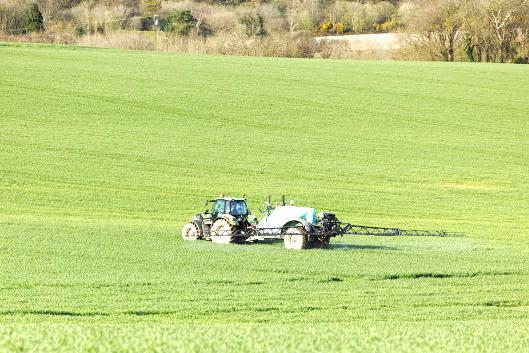
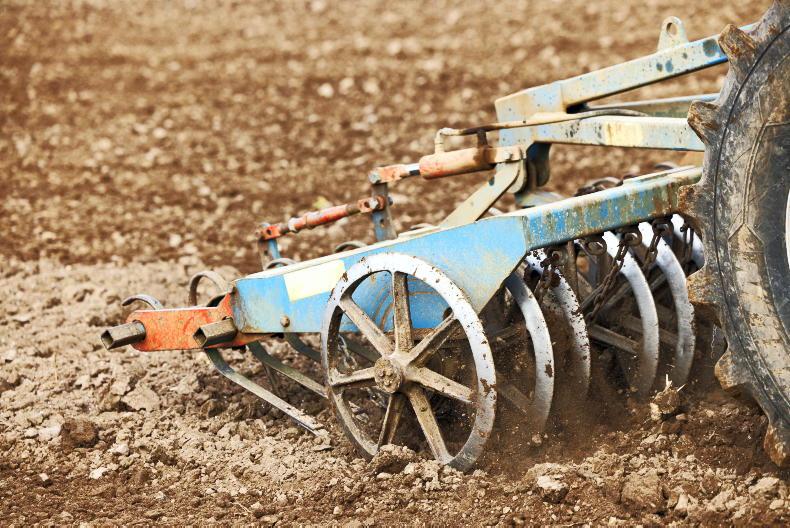


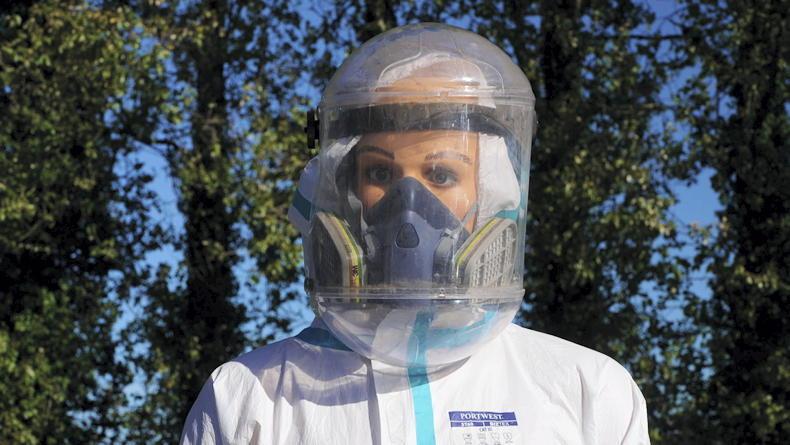

SHARING OPTIONS